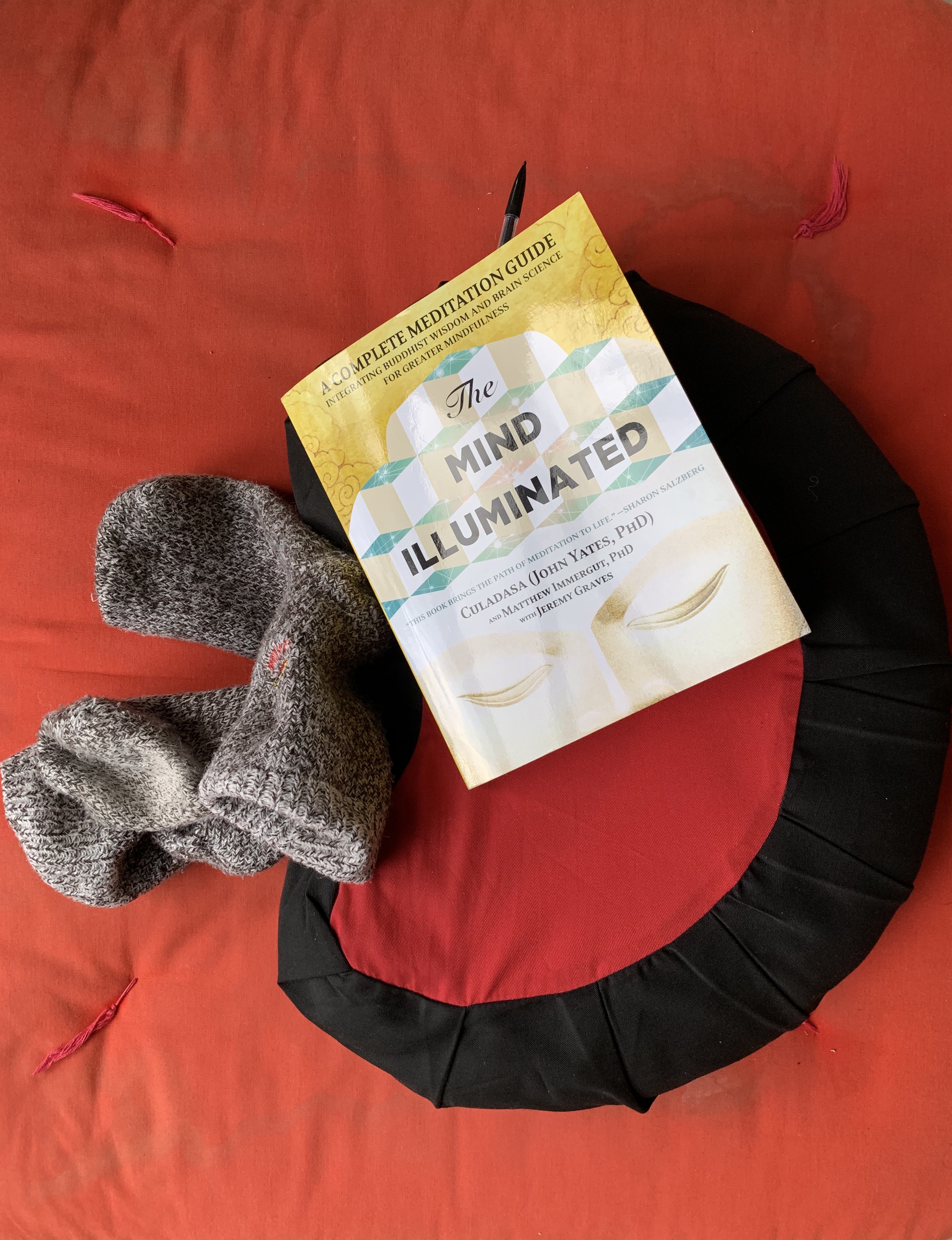
Over a month I practiced the staged system outlined in John Yates (a.k.a. Culadasa)’s book The Mind Illuminated. I kept a journal of my daily practice, some of which I publish here. Putting the rest of the journal on this site is still in my to-do list, but hasn’t been my priority recently.
To navigate chronologically through the journal use the navigation side bar. There is a summary of the series with page content and links below.
I have written about the renunciative worldview associated with the Buddhist path of Sutrayana—and yet Vajrayana has been my chosen practice and primary worldview for twenty-five years. Inevitably my ideas about Sutra are embedded in Vajrayana perspective. I regard detachment, renunciation, purification and equanimity (all Sutric descriptions of meditative experience) from an etic perspective. That’s not to say that I haven’t had and appreciate some of those experiences. However, ‘inside’ Vajrayana, they have distinct, different functions—and they “taste” different. They may even be described uniquely using the language of Tantra or Dzogchen.
So I decided that to better articulate differences and widen my view it would be helpful to experience Sutrayana, the path to equanimity (Samatha-Vipassana, or Insight Meditation) from the inside. Because of my long-term background as a Tantrika, my experience of the staged path cannot equate to a beginner meditator’s fresh encounter with these practices. Even so, I have found the process immensely valuable and enjoyable; I’ve had some new insights and unexpectedly different experiences in my daily practice. I think that sharing them here might be helpful for other practitioners wanting to understand the differences between meditation practice in the Samatha-Vipassana and Vajrayana traditions.
My core practice since the mid-90s has been a set of meditations called the four naljors of Dzogchen Sem’de. That meditation practice formed the experiential base for all accompanying yogic and Tantric practices that I’ve engaged with. Naturally, over the years my practice led to a variety of experiences, some mundane, some non-ordinary.
Experientially I am approaching The Mind Illuminated meditations from what I suppose is an unusual starting point. My experience relevant to this system is that I can usually sit effortlessly, without physical pain, for as long as I want, in a state of awareness with an absence of stuff such as thoughts and emotional complications arising in mind, (called “né-pa” in Tibetan). This is a vibrant, clear experience of “empty mind” in which there is continuous awareness, including a heightened awareness of the senses—sounds in the environment and the visual sphere, and bodily sensations.1 I can usually choose to sustain this state of mind in any context, for example walking around a noisy shopping mall, or when somebody gets irritated or angry.
I chose The Mind Illuminated as the path of Samatha-Vipassana to engage with for several reasons:
- It’s currently quite a popular approach to meditation in the tech industry and I’d like to write later about the confluence of tech work and meditation.
- Several students asked me questions about their experiences with the system in relation to approaching Buddhist Tantric practice.
- It’s well articulated as a staged path, carefully detailed and available as a complete system in one book, without the requirements of attending retreats or getting involved over time with a community.
- Perhaps most importantly, the language and worldview remain true to their origins in Sutrayana Buddhism. Though the interpretive framework is mostly cognitivist representationalism, it’s still clear how each practice relates to its Hinayana or Mahayana lineage. I appreciated this detailed reference to sources.
Additionally to my purposes in this project, I’m generally interested in the process of becoming meta to systems. How does a meta-systemic awareness develop? What does meta-systematicity look like in its application? The path to meta-systematicity can occur organically or with intention. The view from meta-systematicity is always etic to discrete systems, however, one can develop the capacity within a known field to move between etic and emic views. In this project, I’m intentionally “learning the experience of” the Mind Illuminated system, in order to have a more complete understanding of how its parts function, so I can later relate it to the whole domain of Buddhism and meditation.
Following this post are some days from my journal that reflect my process chronologically. I hope you will have some sense of my growing, progressive appreciation for the system.
Day 1, day 2, day 3, day 4, and days 14 to 16 are mostly unaltered practice notes.
On day 5 I start some meta-systemic commentary and note a weird meditational side-effect.
Day 6 and day 8 include commentary on meditating with pain.
Day 7, day 9, day 10, day 11: differences between Vajrayana and Sutrayana.
Day 12: types of awareness.
Day 13 and day 19 include notes on distraction.
Days 17 and 18: commentary on the application of the sub-minds theory to meditation practice.
Day 19 has commentary about dissociative experience and day 20 touches on jhana states.
So far I’ve written one commentary page, about purity and impurity. I have a backlog of journal notes to post, then I will add some more commentary and analysis.
- 1.Connection with the sense fields is maintained, without involvement in the content of senses arising, unlike in some systems where experience of the senses is intentionally subdued or stopped.
